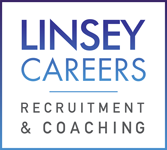This article was originally published in IABC’s CW Bulletin on Feb. 1, 2012.
With a new year underway, there is optimism that it will offer not just more hiring opportunities, but opportunities for career growth as well. Given the complicated employment market of the past few years, I’m frequently asked to “crack the code” of what employers are really looking for in today’s employees.
As an executive recruiter focused primarily on communication and marketing roles, I asked a number of my clients what was most important to them as they look to hire in today’s market. As each conversation began, I expected to hear about the need for strong social media skills, and the ability to maneuver in today’s fast-paced digital world. And staying current with the full mix—both traditional and digital communication—is critical in today’s market.
But during each discussion, I heard much more about intangible skills being the critical factor in hiring decisions. Every communication executive I spoke to talked about the importance of leadership, creativity and agility. And these executives described each of these terms in much more detail than what you might expect.
Leadership
As the term leadership came up in conversation, these managers defined it as meaning far more than the ability to manage people. For them, leadership is the ability to think critically, influence, create and empower others. One communication vice president of a Fortune 50 company said, “I look for people who have a track record for building excellence. Are they inspiring? Do they seem confident in the work they’ve done? When they are in the trenches, do they demonstrate that they can step up and take the lead?”
If you are a job seeker, it doesn’t matter if you are a recent college graduate or have 20 years of experience. These leadership traits can be evident at nearly every stage in your career. To use this definition of leadership in an interview situation, think about those times when you’ve stepped up. Be prepared to talk about the experiences that show you have a track record for building excellence. Whether it’s on a volunteer or freelance project, or leading a global communication team through a crisis, how you tell the story of your experience will show your potential new employer that you can lead.
Your leadership skills may be demonstrated in non-communication roles as well. Leaders tend to lead wherever they are needed. Feel free to give examples from community work or campus projects if you are short on specific examples because your communication career is just beginning.
Creativity
Invariably, interviews include a “creativity” question. Inevitably, the candidate will provide an answer that describes a document or campaign that was “out of the box” for their particular industry. Sure, these types of examples can demonstrate your creative skills, but try to think beyond those campaigns.
The communication and marketing fields are filled with creative people who can toss ideas around. But doing creative work differs from being imaginative. Think about times you departed from the status quo—and created an effective solution that was different than what had been done before.
Interviewers may not ask the exact questions that will reveal your creative problem-solving abilities. Master the art of answering the questions they may not have asked—but need to have answered: Be sure to give examples of how you creatively thought through a situation or problem, and how your actions brought the desired results. Again, it’s how you tell your story that shows the hiring authority you are creative—not just in your favorite communication initiatives but in your day-to-day thinking.
Agility
Agility is the ability to maneuver quickly and nimbly to meet an organization’s myriad needs. The lines between internal and external communication, or between communication and marketing, are getting blurred with technology and social media. Are you stuck in your specialty?
The reality is that when someone is hiring an internal communication manager or director, they are looking for someone with depth within the employee communication function. And the same is true for a media relations specialist. But the organization also wants flexibility, and that means you have to think beyond your specialty and remain agile in thought and action.
As you manage your career, be sure to work closely with the functions in which you do not have as much depth. Understand their needs and how your work ties in with their functions. Staying agile during times of change or crisis means you will be seen as a resource who can help with messaging for a broader audience.
Being able to describe how you do this during an interview situation lets the person hiring understand that you are someone who can jump in wherever an extra hand (or skill or perspective) may be needed. Think about examples of times you were brought in on a special project or were asked to collaborate on a larger initiative that required your expertise, but also exposed you to a much broader part of that program. What did you learn? How have you applied what you learned in other situations?
As you manage your career this year and beyond, continue to develop your skills and hone your specialties—but collaborate with others in those functions that blend with yours. Seek opportunities to step up and take the lead. Be creative in thought and action. Approach your organization’s needs with agility. And then practice telling your own story in a way that can be heard accurately by those who influence where you go next, so they can help you get there.



